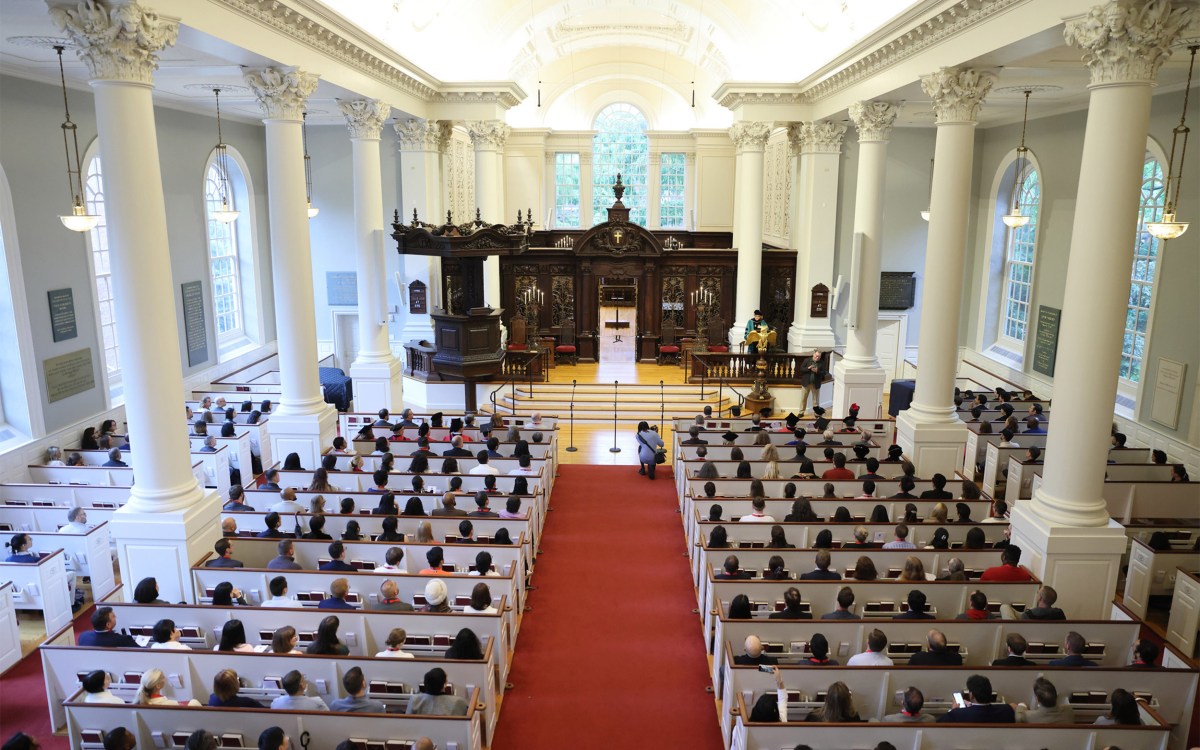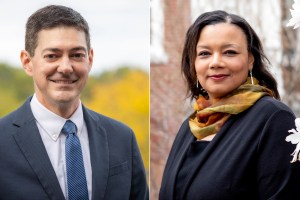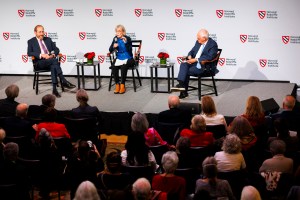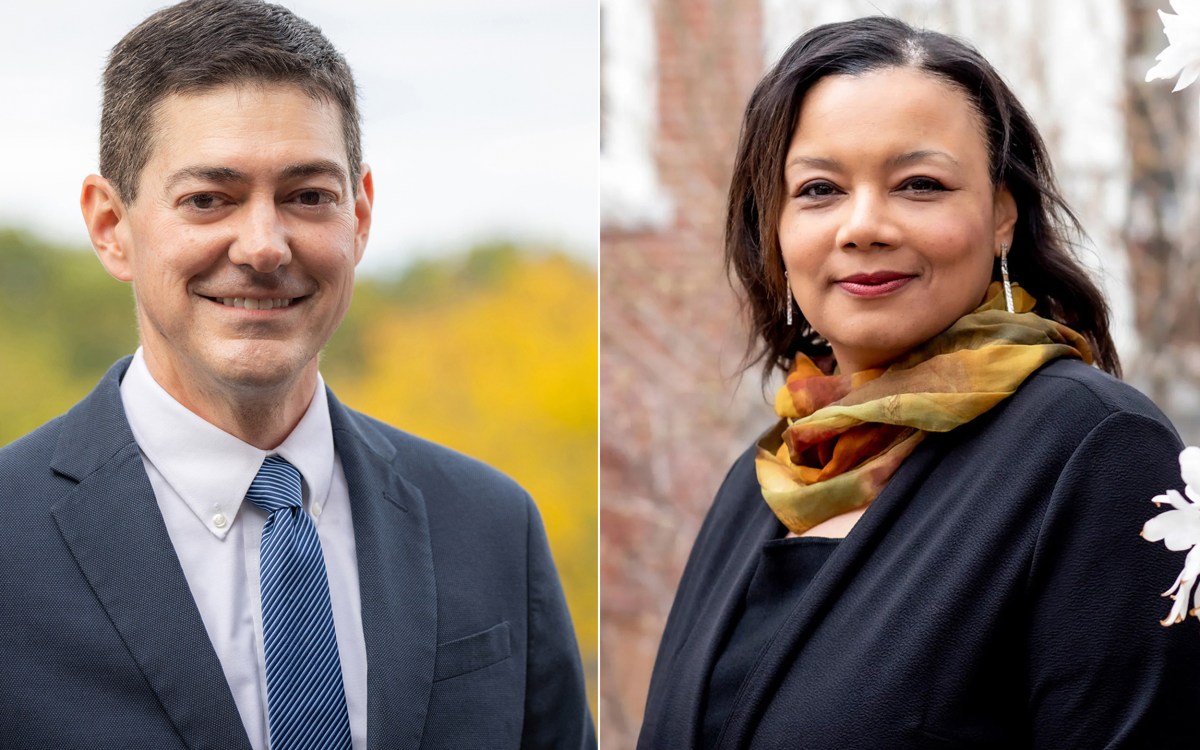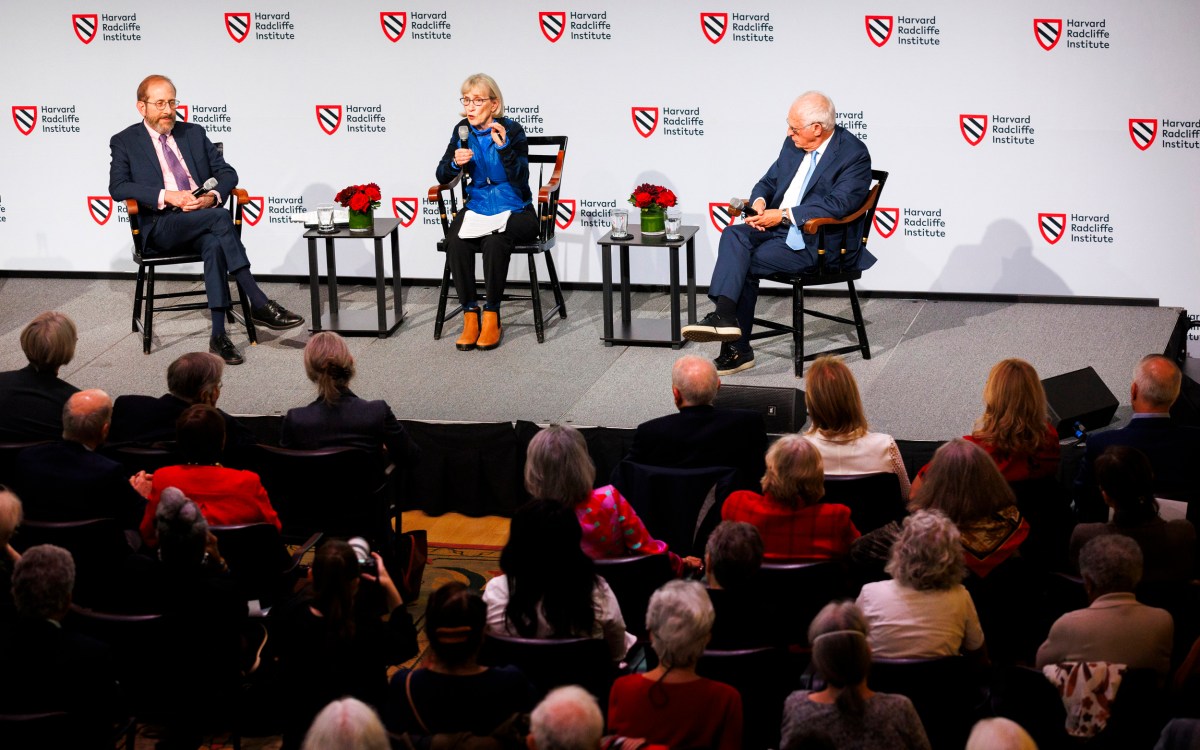Shifting Ground: Busing through the Eyes of a Southie Schoolboy
In his book All Souls: A Family Story from Southie, Michael MacDonald chronicles his childhood in a predominantly poor, Irish-American neighborhood in Boston during the antibusing riots of the 1970s. This controversial moment in education continues to shape school desegregation efforts today and has had a profound impact on MacDonald himself, who initiated an annual vigil in South Boston where survivors remember family members and friends who died violently. He also helped launch the citys successful gun-buyback program. At the Askwith Education Forum at GSE in October, MacDonald read excerpts from All Souls and reflected on his childhood.
I was born in the Columbia Point Housing Project on the South BostonDorchester waterfront. The family had settled in Columbia Point three years before I was born. My mother was still married to Dave MacDonald, but he was nowhere to be seen. Soon into the marriage Dave MacDonald beat my motherfractured her skull on two occasions and broke her ribs on another. To this day, though, Ma will remind you of that one time she knocked out his teeth with one good kick.
The family was living with cheap rent in the project$65 a month. The project wasnt a safe place, but it was all we could afford with the $65 we got from welfare every two weeks. And with the boxes of surplus cheese, butter, and powdered milk that Ma dragged home from the maintenance office, we could survive there.
Like a lot of the other families from Columbia Point, we moved [in the early 1970s] into the housing projects of South Boston. Theyve always been mostly white and mostly Irish. For us, landing in Old Colonyeven myself as a child and for my brothers and sistersit was like we had died and gone to heaven really, to end up in a place where there were so many families like us. The day we moved into the neighborhood, Ma said it looked just like Belfast and that we were in the best place in the world.
But it wasnt long after moving in that the busing riots broke out in South Boston. In 1974, I was eight years old. That time probably [holds] some of my best memories actually. There was a feeling of solidarity, of a lot of fun. We were kids doing what kids love to do, getting into trouble and getting involved with some of the crowds that were rioting. And there was a thrill that we woke up to every daythe thrill of being part of a rebellion.
That September Ma let us skip the first week of school. The whole neighborhood was boycotting school. It was supposed to be just the high-school kids boycotting, but we all wanted to show our loyalty to the neighborhood. I was meant to be starting the third grade at St. Augustines. Ma had enrolled Kevin and Kathy in the sixth and seventh grades there as well. Frankie was going to Southie High, and Mary and Joe were being sent to mostly black Roxbury. So they really had something to boycott.
The whole neighborhood was out. I looked up the road and saw a squadron of police motorcycles speeding down Dorchester Street right along the curb, as if they would run over anyone who wasnt on the sidewalk. The buses were coming. Police sirens wailed as hundreds of cops on motorcycles aimed at the crowds of mothers and kids to clear the way for the law of the land. “Bacon. I smell bacon,” a few people yelled, sniffing at the cops. I knew that meant the cops were pigs.
The road was cleared, and the buses rolled slowly. We saw a line of yellow buses like there was no end to them. I couldnt see any black faces, though, and I was looking for them. Some people around me started to cry. One woman made the sign of the cross, and a few others copied her. “I never thought Id see the day come,” said an old woman next to me. She was trembling, and so was everyone else.
Then all hell broke loose. I saw a milk crate fly from the other side of the street right for my face. More bricks, sticks, and bottles smashed against the buses as the police pulled out their billy clubs and charged with their riot shields in a line of formation through the crowds. Teenagers were chased into the project and beaten to the cement wherever they were caught.
I raced away about a block from the fray to a spot where everyone was chanting, “Here we go, Southie, here we go.” Thats when I realized we were at war. I started chanting too, at first just moving my lips, but then I belted it out. The kids in the crowd all looked at each other as if we were family. This is great, I thought. I had never had such an easy time as this making friends in Southie.
Ma wasnt home, but the TV was on with live coverage of the riots at Southie High. Every channel I turned to showed the same thing. I kept flipping the dial looking for my family and catching glimpses of what seemed to be all the people I knew hurling stones or being beaten by the police or both. This is big, I thought.
I kept changing the channels looking for my family, and I didnt know anymore whether I was scared or thrilled, or if there was any difference between the two anyhow. I was only eight, but I was part of it all, part of something bigger than I had ever imagined, part of something that was on the national news every night.
I lost three [siblings] violently in this period. One brother got involved in a bank job and was shot in the crossfire, then was murdered by his own partners in crime. My brother Kevin, eight months later, was found hanging outside a prison cellhe was in Bridgewater at the time. It looked like suicide but a lot of people say he was murdered for what he knew about organized crime in South Boston. My sister Kathy was pushed off a roof in a fight over drugs and ended up in a coma for five months. Pretty much all of their friends throughout this period died. They were either murdered or they had overdosed or hung themselves.
Ma worked hard just to keep herself busy after the kids were buried. She said she had no time to sit around feeling sorry for herself. She said they were in a better place, better off than the rest of us. But the hearses kept rolling down Dorchester Street where we had watched the St. Pattys Day parade and the antibusing motorcades. And every time it was another Southie mothers turn to see her child off, it brought Ma right back to reality.
The value of education in South Boston has gone way, way down since busing first began. Initially, parents were in fear of their childrens lives because of real [violent] incidentstoo many riots, it seemed, to even bother sending your kids to school anymore. A lot of people dropped out, and their parents went along with it.
I ended up leaving the neighborhood and working mostly in communities of color in Roxbury, Dorchester, and Mattapan. In 1990, I started working with survivor families throughout the city. I worked on antigun programs and with a multiracial coalition of mothers from across the city to help reduce gun violence, mothers who in neighborhoods similar to ours stood up to organized crime and the drug trade. Their own kids were murdered under a code of silence, as its called.
We started a vigil in South Boston. I was watching in the dark as hundreds filed into the Gate of Heaven Church. They stood in line in defiance of the strong winds and pouring rain and walked past the bagpipers playing “Amazing Grace.” There were teenage friends of kids who had committed suicide; mothers whose kids had been murdered, some as long as 15 years ago; older men and women with canes pulling their way up the slippery railing one step at a time. A few black and Latino women got out of taxis they had taken through the storm, braving the town they had always been warned not to enter and being embraced.
I found myself staring out at a sea of faces, looking for my brothers among the living and the dead. I was looking for the truth about their lives and about their deaths. Like me, everyone at that nights vigil will forever be looking for the truth in Southie, where nothing is as it seems.
